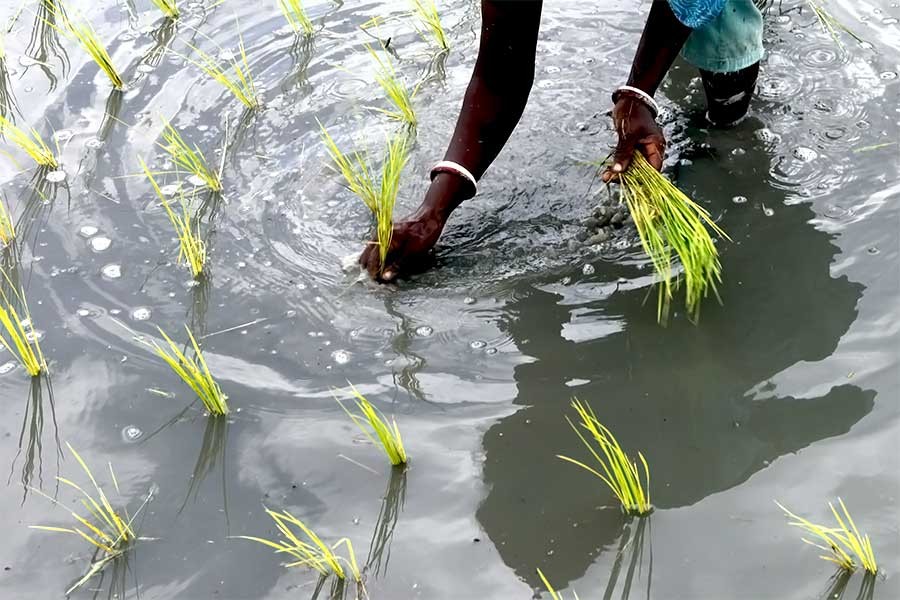
Agriculture proves its worth again
Shamsul Huq Zahid | Thursday, 22 April 2021

An estimated 24.5 million people have become 'new poor' in the country because of the pandemic. This was the finding of a ' rapid response research' carried out jointly by the Power and Participation Research Centre (PPRC) and the BRAC Institute of Governance and Development (BGID) last month.
The survey covered a small number of households---only 6,000.
The Centre for Policy Dialogue (CPD) in similar survey findings, published some days back, said nearly 16.38 million people became 'new poor' amid the pandemic. The findings may vary, but the fact remains that millions of people, who had been above the poverty line before the pandemic, have lost jobs or sources of their income since March last year and turned out to be poor.
One does not need to depend on statistics to know the damage that the Covid-19 pandemic has caused to life and livelihood. A person has been witnessing all the negative developments taking place at home and abroad since the virus took over the world early last year.
Undeniably, both extremely poor and non-poor (people above the poverty line) living in rural and urban areas have been bearing the brunt of the pandemic. But as the economic activities started recovering from the middle part of the last year, both poor and urban also saw a recovery in their income.
But, according to the PPRC-BGID survey findings, the recovery in the income of the poor living in urban slums has been much slower than that of their rural counterparts. The rural poor were able to recover losses at a faster pace. This was possible because of good farm output, the PPRC-BGID survey said.
Thus, the strength and importance of agriculture in Bangladesh economy have again come to the fore.
The policymakers usually make no mistake in eulogising the role of agriculture while speaking in public.
Why would not they?
Food production has gone up manifold during the last 50 years. When the country became independent, it could not grow enough food to feed a population of 75 million. Thus, it was beyond anyone's wild imagination that the same country having a population of 165 million would be able to achieve near self-sufficiency in food production. Apart from cereals, the production of fish, meat, poultry and fruits has also increased manifold.
Though the contribution of agriculture to the country's gross domestic product has declined notably over the last five decades, it still employs more than 40 per cent of the country's workforce, in addition to making available food and other essential farm items to the population.
In the national budgets, subsidies and incentives are offered to agriculture, primarily to boost production. But the issue of a fair price for farm produce, which is the most important issue as far as the economic wellbeing of the peasantry is concerned, does not get much attention of the policymakers. Though consumers are made to pay high prices, farmers hardly get any benefit out of it.
The banks offer agricultural loans, but the government has never tried to know seriously whether the same reaches the real farmers and used properly.
In recent years, the government has been offering support to farm mechanisation. More, however, needs to be done.
The government is oblivious of yet another important issue--- continuous shrinking of the arable land. According to an estimate, the country is losing 1.0 per cent of its arable land to housing, construction of roads, highways and other infrastructures. Thus, the time will come when there will be no agricultural land to grow food and other crops. Such a development might not be too distant if a part of Bangladesh goes under rising seawater because of global warming.